First of all, this isn't DDD thinking, this is RDBMS thinking. In DDD you model business processes as they are in the real world, you don't have one-to-many etc concepts. So forget about DB, foreign keys and so on.
What are your bounded contexts (BC)? Each aggregate is a BC itself so they can have different representation of the concepts EVEN if they are named the same.
If I understand corerctly, it seems that A B C D are part of a single aggregate. That doesn't mean they are defined ONLY in that aggregate and ONLY in that form. However if C is a fully fledged AR in some other BC, it is quite possible that in THIS context to be represented only as an id or a few properties (interfaces are VERY handy for this stuff). So even if they are both named C, they are different, having only the behavior needed by a specific context.
DDD works with a lot of BCs and the models are valid for one BC only. this means that in your app you would have multiple A ,B ,C definitions according to each BC and each definition might be slightly different. This means that there isn't really only one model suitable for all the cases (and I'm not talking about CQRS here, just DDD).
I don't know much about the domain to actually come up with something more concrete. But simply put, try to represent things as they are and as they work in reality.
